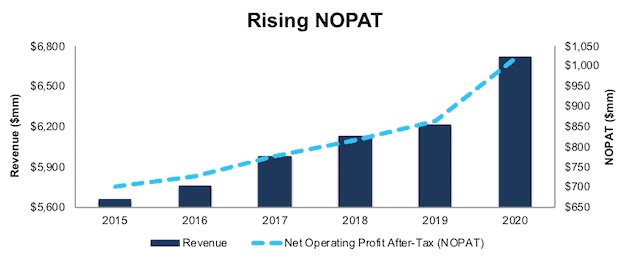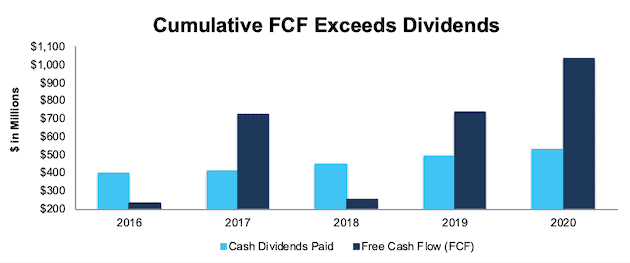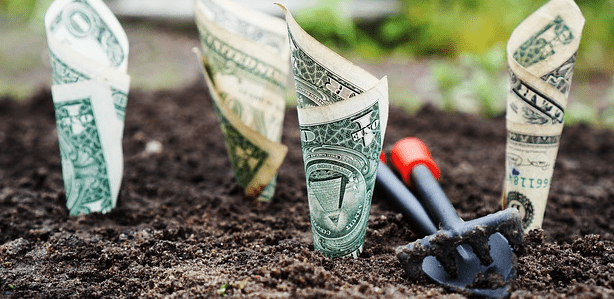Seven new stocks make our Dividend Growth Stocks Model Portfolio this month, which was made available to members on August 27, 2020.
Recap from July’s Picks
On a price return basis, our Dividend Growth Stocks Model Portfolio (+2.6%) underperformed the S&P 500 (+5.8%) by 3.2% from July 29, 2020 through August 25, 2020. On a total return basis, the Model Portfolio (+2.8%) underperformed the S&P 500 (+5.8%) by 3% over the same time. The best performing stock was up 15%. Overall, four out of the 30 Dividend Growth Stocks outperformed the S&P 500 from July 29, 2020 through August 25, 2020.
Only our research utilizes the superior data and earnings adjustments featured by the HBS & MIT Sloan paper,"Core Earnings: New Data and Evidence.” The long-term success of our model portfolio strategies highlights the value of our Robo-Analyst technology[1], which scales our forensic accounting expertise (featured in Barron’s) across thousands of stocks[2].
The methodology for this model portfolio mimics an All-Cap Blend style with a focus on dividend growth. Selected stocks earn an Attractive or Very Attractive rating, generate positive free cash flow (FCF) and economic earnings, offer a current dividend yield >1%, and have a 5+ year track record of consecutive dividend growth. This model portfolio is designed for investors who are more focused on long-term capital appreciation than current income, but still appreciate the power of dividends, especially growing dividends.
Featured Stock from August: The Clorox Company (CLX: $224/share)
The Clorox Company (CLX) is the featured stock from August’s Dividend Growth Stocks Model Portfolio.
We made Clorox a Long Idea in September 2017 and closed the position in May 2019 for a 13% gain (vs. 17% for the S&P 500). The stock now presents a much more favorable risk/reward than when we closed the position.
Clorox has grown revenue by 4% compounded annually and net operating profit after-tax (NOPAT) by 8% compounded annually over the past five years. Longer term, Clorox has grown NOPAT by 5% compounded annually over the past two decades. The firm’s NOPAT margin has increased from 12% in fiscal year ended (FYE) 2015 to 15% in FYE 2020, while return on invested capital (ROIC) has improved from 11% to 14% over the same time.
Figure 1: Clorox’s Revenue & NOPAT Since 2015

Sources: New Constructs, LLC and company filings
Steady Dividend Growth Supported by FCF
Clorox has increased its dividend for 16 consecutive years and from $3.11/share in fiscal 2016 to $4.29/share in FYE 2020, or 8% compounded annually. The current quarterly dividend, when annualized, equals $4.44/share and provides a 2% dividend yield.
More importantly, Clorox’s strong free cash flow (FCF) supports the firm’s dividend payment. Clorox generated $3 billion (11% of current market cap) in FCF while paying $2.3 billion in dividends from FYE 2016 to FYE 2020, per Figure 2.
Figure 2: Free Cash Flow (FCF) vs. Regular Dividend Payments

Sources: New Constructs, LLC and company filings
Companies with FCF well in excess of dividend payments provide higher quality dividend growth opportunities because we know the firm generates the cash to support a higher dividend. On the other hand, the dividend of a company where FCF falls short of the dividend payment over time cannot be trusted to grow or even maintain its dividend because of inadequate free cash flow.
CLX Has Upside Potential
At its current price of $224/share, CLX has a price-to-economic book value (PEBV) ratio of 1.0. This ratio means the market expects Clorox’s NOPAT to never meaningfully grow over its remaining corporate life. This expectation seems overly pessimistic given that Clorox has grown NOPAT by 3% compounded annually over the past decade and 5% compounded annually over the past two decades.
Even if Clorox’s NOPAT margins fall to 14% (five-year average vs. 15% in FYE 2020) and the firm grows NOPAT by just 2% compounded annually for the next decade, the stock is worth $263/share today – a 17% upside. See the math behind this reverse DCF scenario.
Critical Details Found in Financial Filings by Our Robo-Analyst Technology
As investors focus more on fundamental research, research automation technology is needed to analyze all the critical financial details in financial filings as shown in the Harvard Business School and MIT Sloan paper,"Core Earnings: New Data and Evidence”.
Below are specifics on the adjustments we make based on Robo-Analyst findings in Clorox’s FYE 2020 10-K:
Income Statement: we made $190 million of adjustments with a net effect of removing $80 million in non-operating expenses (1% of revenue). See all adjustments made to Clorox’s income statement here.
Balance Sheet: we made $3.8 billion of adjustments to calculate invested capital with a net increase of $2.4 billion. The most notable adjustment was $1.7 billion (36% of reported net assets) related to goodwill. See all adjustments to Clorox’s balance sheet here.
Valuation: we made $4.5 billion of adjustments with a net effect of decreasing shareholder value by $3.2 billion. Apart from total debt, one of the most notable adjustments to shareholder value was $535 million in excess cash. This adjustment represents 2% of Clorox’s market value. See all adjustments to Clorox’s valuation here.
This article originally published on September 3, 2020.
Disclosure: David Trainer, Kyle Guske II, and Matt Shuler receive no compensation to write about any specific stock, style, or theme.
Follow us on Twitter, Facebook, LinkedIn, and StockTwits for real-time alerts on all our research.
[1] Harvard Business School features the powerful impact of our research automation technology in the case New Constructs: Disrupting Fundamental Analysis with Robo-Analysts.
[2] Compare our analytics on a mega cap company to Bloomberg and Capital IQ’s (SPGI) analytics in the detailed appendix of this paper.
